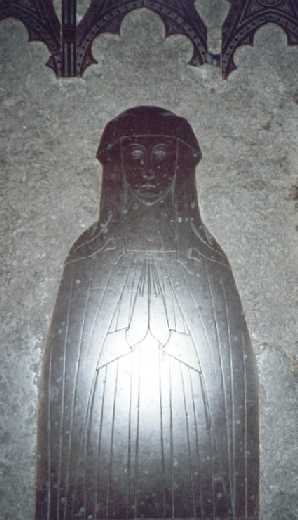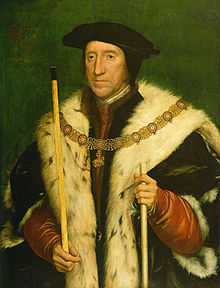c1200-1366
Poyntz
Some time probably towards the end of the twelfth century, the King granted the manor of Sutton to the Poyntz family. There is no record of this event - the first record of Poyntz ownership is in 1212. As a result of its ownership by the Poyntz family, the village gradually took on the present name of Sutton Poyntz (although that spelling is quite recent). The Poyntz family seem to have descended from someone called Pons, two of whose sons were major landowners in the Domesday Book. Nothing is known about who Pons was, although it is reasonable to guess that he was Norman. It is believed that the Poyntz family who came to own Sutton Poyntz descended from a younger brother of the two Domesday Book landowners. This Poyntz family lived initially in Gloucestershire, and came (via a marriage into the Malet family) to the important lands and titles of Barons of Curry Malet (near Taunton). They will have lived in Gloucestershire and Somerset - Sutton Poyntz will have been, to them, a fairly unimportant and remote part of their domain.
From 1315 to 1361, Sutton Poyntz was held by a Poyntz widow, Maud, granted as dowry when she re-married after her first husband's death. Her step-son was the last Poyntz to own Sutton Poyntz; he died in 1375, with no sons, on which the title of Baron Poyntz of Curry Malet died out, and his properties were shared between his two daughters. Only one of his daughters had children of her own; this was Margaret, who had married a Dorset landowner, John Newburgh (more about the Newburgh's below). It seems however that the last Baron Poyntz had already sold Sutton Poyntz, to a very important person called Sir Guy de Bryan.
In passing, it is worth noting that another branch of the Poyntz family continued to live and thrive in Iron Acton, just north of Bristol, but they had no connection with Sutton Poyntz.
|
Lady Alice de Bryan |
1366-1461
Bryan
Sir Guy de Bryan bought the manor of Sutton Poyntz from the last Baron Poyntz in 1366. The Bryan family were landowners from Torbryan in Devon, and confusingly almost all seem to have had the Christian name Guy. They were prominent soldiers, and also held land in South Wales. Sir Guy became an extremely influential adviser to King Edward III and then to King Richard II. He was Steward and then Lord Chamberlain to the King, acted as Ambassador on a mission to the Pope, and was Admiral of the Fleet. He gradually increased his land-holdings, including Sutton Poyntz, Hazelbury Bryan and Puncknowle in Dorset, and had homes in Dorset at Woodsford Castle and Rampisham.
This Sir Guy married twice, and had five children: two daughters and three sons. However, two of the sons died without children of their own, as did the two daughters. Sir Guy's oldest son, however, married and had two children, both daughters.
This oldest son was also called Guy. Guy the younger married a lady from Suffolk, Alice de Bures (hence also known as Alice de Bryan) who was a significant landowner in her own right. Guy the younger, Alice's husband, died before his father, but their two daughters became co-heirs to their grandfather Sir Guy. Alice acted as guardian to her two daughters, and hence for a time as effective owner of the Bryan estates. However she seems to have owned Sutton Poyntz in her own right, as a result of an agreement with Sir Guy.
Alice lived on for 45 years after her husband's death, but unusually (for the time) did not remarry (the King would normally have arranged a second marriage). On her death, her properties, including Sutton Poyntz, passed to her surviving daughter Elizabeth (the other daughter had died without children). Elizabeth in turn had no sons - just one daughter Maud. Maud married twice, and had a son by her second husband; her son Humphrey FitzAlan succeeded his father as Earl of Arundel at the tender age of 6, but then sady died just 3 years later.
The next owner of Sutton Poyntz was Humphrey's half-sister, Amicia Stafford. Amicia married James Butler, Earl of Ormond. She died in 1456 without children, and so, a little later, did James (beheaded after fighting on the wrong side at one of the Wars of the Roses battles). Amicia was the very last direct direct descendant of Sir Guy de Bryan who had bought the manor of Sutton Poyntz.
1461-1526
Newburgh
Now comes a curious turn in the history of Sutton Poyntz, whose meaning we still do not quite understand. In 1447, about ten years before Amicia's death, a Court of Arbitration sat and passed judgement on the ownership of Sutton Poyntz. Their judgement was that the manor belonged to Amicia and her descendants, or in the absence of such descendants to James Earl of Ormond and his descendants, or in the absence of such descendants to John Newburgh, a Dorset landowner living at West Lulworth. It's not clear what claim John Newburgh had, but one possibility is that the sale to Sir Guy de Bryan in 1366 had been a transfer of title to him "and the heirs of his body" (i.e. his direct descendants), and someone had noticed that Amicia was the very last such direct descendant. And if the direct line died out, then just possibly the sale would be wiped out, and the manor would revert to the descendant of the last Baron Poyntz, who was John Newburgh, great grandson of the John Newburgh who had married Margaret Poyntz.
In any case, after the deaths of Amicia and then of James Butler in 1461, ownership of Sutton Poyntz clearly passed to the Newburgh family. The Newburgh's had lived in Dorset, at Winfrith and then Lulworth, since at least about 1150. Possibly (we think probably) they were descended from the Earls of Warwick (surnamed de Neubourg) and hence from a major Norman family called de Beaumont.
The Newburgh's held Sutton Poyntz as part of their Lulworth estates from 1461 until 1514, when John's grandson Sir Roger Newburgh died. He had only one child, a daughter, who married an Essex landowner called John Marney. They in turn had two daughters; Catherine, who married Thomas lord Poynings, and Elizabeth who married into one of the very greatest families in Tudor England, the Howards.
The Lulworth estates were divided between Catherine and Elizabeth - Sutton Poyntz was alloted to Catherine. Catherine had no children, and eventually Sutton Poyntz reverted to Elizabeth's side of the family.
1526-1647
Howard
|
Thomas Howard, 3rd Duke of Norfolk |
Elizabeth Marney, grand-daughter of Sir Roger Newburgh, married Thomas Howard, second son of Thomas Howard, 3rd Duke of Norfolk, (and younger brother of Henry Howard, Earl of Surrey, who was executed for treason in the last year of Henry VIII's life). Thomas Howard was uncle to two Queens of England, Anne Boleyn and Katherine Howard. Elizabeth inherited half of the Newburgh's Lulworth estates, as well as half of the Marney land in Essex. She and her husband settled in Dorset, and he was created Viscount Howard of Bindon. They had two sons, who succeeded in turn to the lands and title but seem to have made themselves fairly unpopular. They both died without heirs (legitimate, at least); their Dorset estates (now including Sutton Poyntz) passed in 1611 to a cousin, a grandson of Henry Howard.
This cousin, who was created 1st Earl of Suffolk, was one of the richest people in England, having also inherited huge estates from his mother. He built Audley End in Suffolk, which was the largest private house in England. He was Lord High Treasurer to King James I; however he seems to have confused his king's money with his own and was tried for embezzlement, after which his fortunes crashed to the merely lordly.
Ownership of Sutton Poyntz, as part of the Lulworth estate, passed to the son and grandson of the Earl of Suffolk. In 1641 the 3rd Earl sold the majority of the Lulworth estate to Humphrey Weld; however, for reasons that are not now known, Sutton Poyntz was not included and was sold later to a merchant called Eliab Harvey.
1647-1793
Harvey
Eliab Harvey was a London merchant, son of a merchant from Folkestone, and younger brother of Dr William Harvey, who was famous for first correctly describing the circulation of blood in the body. Eliab settled at Chigwell, in Essex; in 1647, he bought the manor of Sutton Poyntz from the 3rd Earl of Suffolk.
Six generations of Harveys owned Sutton Poyntz, between 1647 and about 1793, when it was sold, by another Eliab Harvey. This second Eliab was an Admiral, and at the Battle of Trafalgar captained the Temeraire (the "Fighting Temeraire" of Turner's painting). He was also an outrageous gambler, in an age of big gambling, and may have sold Sutton Poyntz to settle gambling debts.
1793-1925
Weld
Admiral Eliab Harvey sold Sutton Poyntz in c1793 to the Weld's of Lulworth Castle - Sutton Poyntz was thereby reunited with the rest of the Lulworth Estate, as it had been for most of the period 1461-1611.
Four generations of Weld's owned Sutton Poyntz, between the 1790's and 1925. In 1923, Reginald Weld died, aged 81, leaving the Lulworth Estate to his younger brother Humphrey (aged 69). This led to the inevitability of a double dose of Death Duties in quick succession. Parts of the Estate therefore had to be sold. Almost the whole of the manor of Sutton Poyntz (including the villages of Sutton Poyntz and Preston, and most of the farms around the two villages) was sold off in lots, mainly to sitting tenants.


